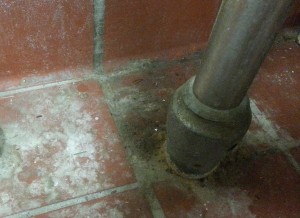School kitchens, cafeterias, and food storage areas provide great habitat for mice. And it takes real dedication and attention to detail to deep-clean those hard to reach places.

Those greasy pathways and mouse droppings — are they days or months old? Only thorough, timely cleaning will keep you on top of your game.
But here’s why you’ve got to: Mouse droppings, urine, and even the greasy sebum trail — grease marks from protective oils on rodent fur —aren’t just health risks and code violations.
They make it really hard to tell whether your pest management practices are working. Because — how could you know if these droppings are days or months old?
Behind equipment. Deep under sinks. Hard to reach corners. They’re easy to miss during daily cleanings. And often they’re not in the contract between a school and its service provider. Or if everything is handled in-house, they can get lost as different departments assign their roles and responsibilities.
Assign deep-cleaning responsibilities as soon as you possibly can.
What best management practices prevent mouse problems?
Every day:
- Clean up food scraps, spills, and grease residue asap
- Sweep and wash floors — often
- Place garbage in outdoor dumpster
- Rinse all garbage cans inside and out — including wheel wells
- Clean — and dry — countertops
- Clean up spills, grease, and sugar on stove tops and cooking or warming units
Every week:
- Clean hard-to-reach areas — molding, walls, and flooring behind and under appliances and cooking equipment
- Clean food carts, shelves, wheels, and wheel-wells
- Clean work-area shelves and food-tray return areas
- Clean food storage areas — and get rid of clutter
Every three months:
- Move vending machines; clean under, behind, and to the sides
- Clean greasy buildup on light fixtures
- Find ways to reduce those difficult-to-clean areas to a minimum: put equipment on casters, move equipment 6″ from walls, and remove inoperative equipment
Preventing pests and careful monitoring are two vitally important IPM practices. Thorough cleaning eliminates not only food and shelter, but evidence of past pest issues as well — and saves you time and money in the long run. We’ll say it again: Assign responsibility for these cleaning practices as soon as possible.
For more information, visit our new School IPM Best Management Practices website. Inspection forms, pest fact sheets, IPM protocols, and links to the best and latest from IPM experts will support the novice and the seasoned IPM practitioner alike.
